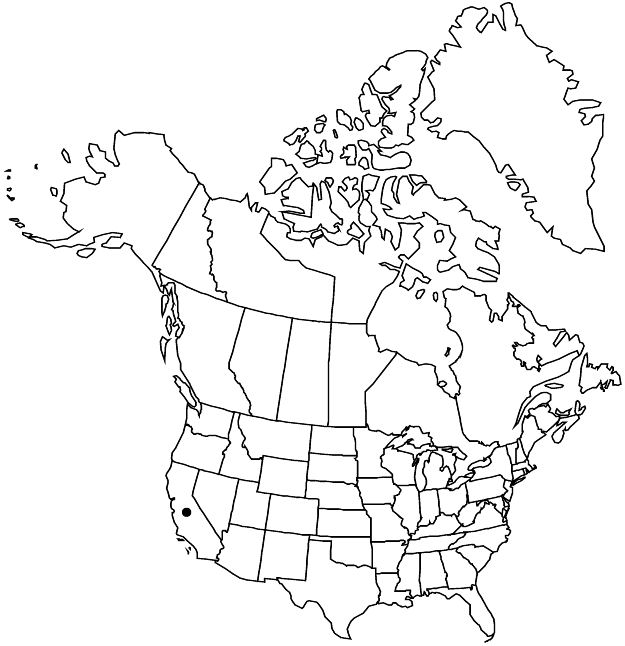Mentzelia ravenii
Phytologia 21: 285. 1971.
Plants candelabra-form, (5–)20–45 cm. Basal leaves persisting; petiole present or absent; blade linear-lanceolate, margins deeply to shallowly lobed. Cauline leaves: petiole absent; blade ovate-lanceolate to lanceolate, to 18 cm, margins deeply lobed to dentate. Bracts green with prominent white base usually conspicuously extending outwards from midvein, ovate, 5.6–8.4 × 1.8–3.9 mm, width 1/5–2/3 length, not concealing capsule, margins 3–5-lobed. Flowers: sepals 2–6 mm; petals orange proximally, yellow distally, 5–11(–13) mm, apex retuse; stamens 20+, 3–7 mm, filaments monomorphic, filiform, unlobed; styles 3.5–8 mm. Capsules clavate, 8–23 × 2–3 mm, axillary curved to 45° at maturity, usually inconspicuously longitudinally ribbed. Seeds 15–30, in 2+ rows distal to mid fruit, tan, dark-mottled, usually irregularly polygonal, occasionally triangular prisms proximal to mid fruit, surface tuberculate under 10× magnification; recurved flap over hilum absent; seed coat cell outer periclinal wall domed, domes on seed edges more than or equal to 1/2 as tall as wide at maturity. 2n = 36.
Phenology: Flowering Mar–May.
Habitat: Sandy desert foothills, roadsides, desert scrub, Joshua-tree woodlands.
Elevation: 300–1200 m.
Discussion
Mentzelia ravenii is narrowly distributed, with most populations limited to desert foothills on the northern edge of the San Gabriel Mountains in northeastern Los Angeles County. Populations of M. ravenii with relatively large flowers with yellow petals are often found growing under desert shrubs in mixed populations with M. veatchiana, which has relatively small flowers with orange petals in this area. A few tetraploid populations from western Riverside County have also been called M. ravenii (J. E. Zavortink 1966); further work is needed to confirm that these represent the same species. See 72. M. gracilenta for discussion of similarities it shares with M. ravenii.
Selected References
None.
